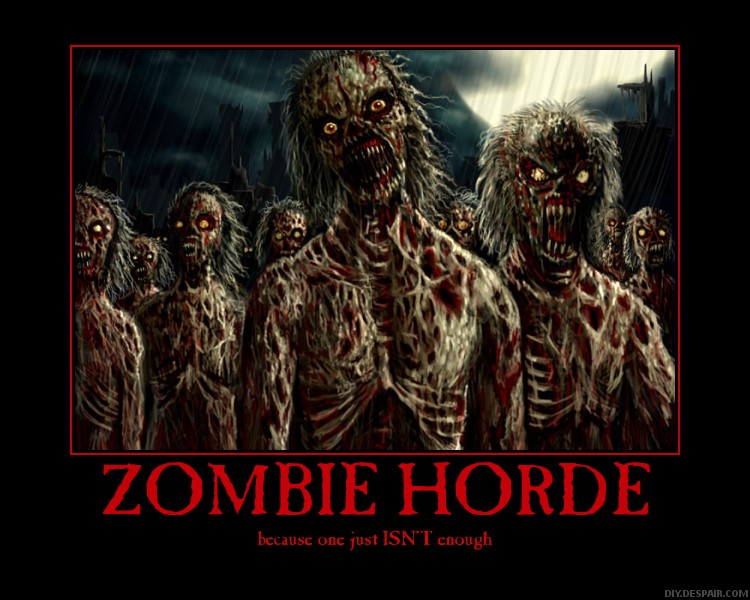 |
| How not to play Humans vs Zombies |
I've been asked a couple of times, why no flaps? Our pouches have that funny shock cord and toggle thing going on while our rig and holsters are totally absent of them, relying instead on MOLLE and friction respectively. It used to be that infantrymen would refer to the flap on their holster as a 'dead man's flap' because it would get you killed in the time you took to get around it and draw your weapon. Quick draw is essential for BUZAN players and given they're a reasonably average Nerfing group, I'd wager it's important for everyone else too. Even the MkIII only has a small fixed retaining strap after we literally exhausted every other option (I'm not joking, you guys only saw the mag locks and the plastic buckles, our better ideas!). Why? Because I want to get to my blaster as fast as damn possible, I've just realised my Stampede has just jammed and I've got less than a second to get this shot off before I get turned. Fumbling with a flap in that situation? No thanks.
 |
| MilSpec M4 Multicam pouch, damn flaps! |
There are other reasons why flaps are unnecessary. Drawing a clip isn't as life or undeath (geddit?) as a side-arm but it's annoying to have to fiddle with things when you're trying to concentrate on the horde that's charging you. Besides, many of the flap designs are there to keep dust, grit and other crap out of magazines that, in a fire-arm, would probably take your head off if the round were to get stuck in the chamber. The worst you'll get with Nerf is a scratched up brass breech that you'll need to clean up and service. Any one who has a one knows this and ought to be sensible enough to maintain their kit correctly. Cost is another factor that puts flaps out of the equation: it costs a lot less for a 45cm length of shock cord, a golf toggle and a pair of 25mm webbing squares than it would for either a side release buckle or velcro followed by the extra binding, Cordura and such that a flap would need. We have a very strict pricing policy here to cater to our market so if we can make it cheaper without compromising quality, we will. Flaps are a nuisance and get in the way when things get heated.
Combat Efficacy (or how your Longshot might not be as badass as you might think)
That brings me onto the second part of what is now looking like an essay: Combat Efficacy (CE). This is a nebulous term I made up sometime in the early days of BUZAN's armoury team. It is a rough metric of how something will perform under the stress of combat. A blaster is a tool to help you play the game, you need the right tool for the job but you also need to know how to use it. A lot of this might seem obvious for experienced players but I'm still going to get this off my chest because it's important.
 |
| Where's your singled Titan now? |
It's important to note that CE is a broader thing that just how good an individual player is with something. For example, a Raider is a brilliant anti-horde blaster because of that slam-fire and drum magazine. It has a brilliant CE rating in that regard but a left handed user is going to struggle because of the asymmetric design. DDespite being highly efficacious in the given situation, it isn't for that player.
Finally, let's bring this back to what BSUK does best: tactical gear. Combat efficacy of flaps is minimal, they get in the way and serve no purpose for Nerfers. Secure yet accessible clip holders, are essential as are accessible side-arms and the like.
I've rambled on enough now, if you're still reading, thank you. At the end of the day, it's all about compromise and play-testing to work out what fits for our market - that philosophy has served us well so far, long may it continue! Now where's my Stampede? I've got zombies to hunt.
- Mike, BSUK MD
POST SCRIPT: I've just remembered my Stampede has a drive train fault and currently doesn't function. Consequently, I am just about to be overwhelmed, send help - or LARP safe foam, whichever. :D



